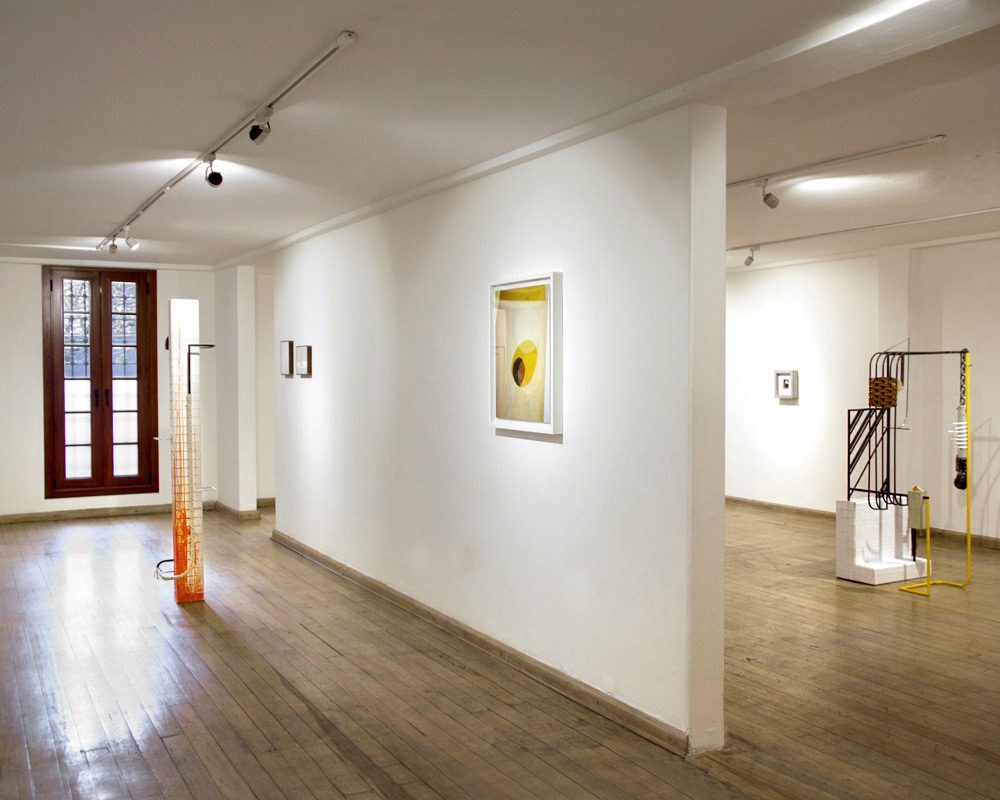
Luego la Forma, Galeria de Arte Mexicano Sala: GAM , Mexico City 09/2019 – 01/2020
An addendum on the immaterial.
The exhibition Luego la Forma, this fall at Galería de Arte Mexicano, elucidates on a process native to the plastic arts, the conjuring of the empirical from the intangible. The show weaves together the practices of Ramiro Chaves, Yeni Mao, Fabiola Menchelli, and Alejandra Venegas. The practices tease out drawings, paintings, sculptures or photos from the gooey transitional space between source and realization.
Venegas translates her surrounding landscape, processing it through the deceptive simplicity of gesture and mark-making. The works are an experiential reaction, digesting the landscape and pushing it through the automatic path from eye to hand. Also in conversation with his surroundings, Chaves uses multiple hands and multiple frames of reference. The cooperative works layer space and expression, a testimony to collective consciousness. Instead of creating environmental space like other large work, the seemingly endless scroll becomes a document of the process.
Concerned with the elemental nature of light as a defining force, Menchelli uses the incorporeality of light not only as a process but as a subject matter. The photos are about the photography, creating a feedback system that hums with mysticism, astronomy, and science fiction. In a similar closed-loop, Mao approaches the incorporeal through the mediation of embodiment. He works with architectonic suggestiveness, constructing a cyborg body solely through the surrounding framework. Various components and visual languages- expressions of craft, material building systems and modes of display- provide a sounding board of information.
This show is about process as expression, a physicality birthed from an impression, the form shaped from an ethereal whiff. The works decipher the way in which form is made. These practices are each an elucidation, a paraphrase, a decoding.




steel, ceramic tile, cement, leather, yellow quartz, volcanic stone, gold plated bronze, rabbit skin, acrylic enamel
160x 66x 58cm, 63x 26x 23in

fig 17.5 reckoner, 2018
steel, brass, leather, tile, cement, ceramic tile, acrylic enamel
169x 83x 64cm, 66.5x 32.5x 25in

ceramic tile, steel cotton cord, tezontle, acrylic enamel
184x 35x 35cm, 72.5x 14x 14in

steel, leather, salt, ceramic, volcanic stone, fabric, wood
71.5.x 26.5x 21.5cm, 28x 10.5x 8.5in
This ongoing body of work highlights Yeni Mao’s interest in the vernacular of craft and architecture as a medium for equations between the body and the built environment. Mao works with the significance of material production history, and how the alteration of those materials becomes language or narrative. The works pushes against the dogma of architectural modernism, pitting the physical and psychological properties of restraint and order against the chaos of the visceral human condition.
Resonant of the surrealist machines, the works approach the incorporeal through the mediation of embodiment. Mao works with architectonic suggestiveness, constructing a cyborg body through an organizing framework, a form defined by its circumstances. Various components and visual languages- expressions of craft, material building systems and modes of display- provide a sounding board of information.
Mao consistently references his surroundings, drawing from the colonial amalgamation of materials and their relationship with contemporary industrial production. Through fragmentation and de-contextualization, exploding the construction into components, Mao links our own personal cultural fusion and displacement with the way we construct our environment.

ceramic tile, sidewalk fragment, acrylic enamel
58x 62x 63cm, 23x 24.5x 25in